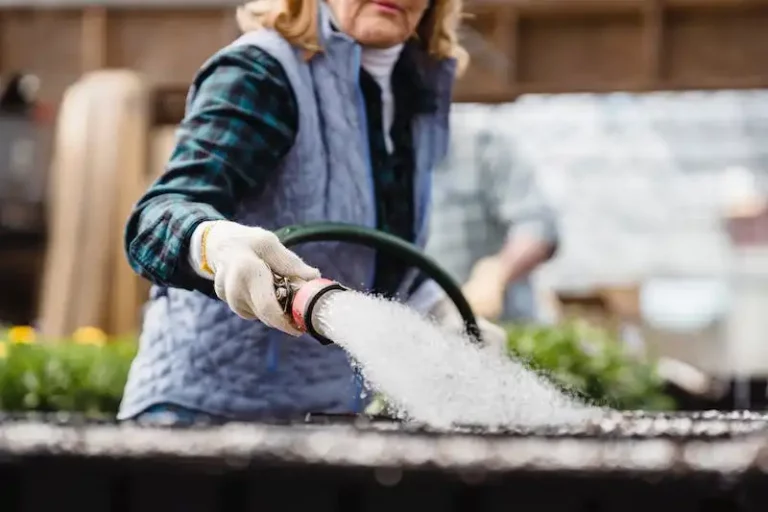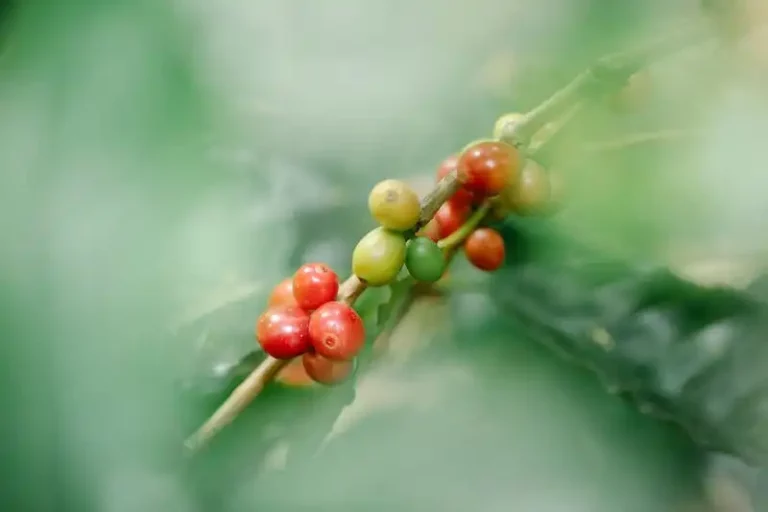Fuchsias are beautiful flowering plants that can easily be grown from cuttings. This is a great way to expand your fuchsia collection without having to buy new plants. With the right technique and conditions, you can successfully propagate fuchsias from cuttings in just a few weeks.
One of the easiest ways to propagate fuchsias is by taking softwood cuttings in the spring or early summer. These are the new growth stems that have not yet hardened. To take cuttings, you will need a sharp blade or knife to avoid damaging the plant. Cut just above a joint on the stem, making sure to include at least three sets of leaves.
Once you have taken your cuttings, remove the lower leaves and flowers. This will help the cuttings focus their energy on rooting instead of supporting unnecessary growth. Dip the cut end into rooting hormone powder, which will encourage root growth. Then, plant the cuttings in a well-draining, multi-purpose compost. Make sure the compost is damp but not waterlogged.
After planting the cuttings, you can place a plastic bag or a propagator over them to create a mini greenhouse effect. This will help to maintain a moist environment for the cuttings to root. Keep the cuttings in a warm and bright spot, but avoid direct sunlight as this can cause them to dry out.
Over the next few weeks, check on your cuttings regularly to ensure they have enough moisture. You may need to water them lightly if the compost dries out. Once the cuttings have rooted, which usually takes around six to eight weeks, their roots will start to show through the surface of the compost.
At this point, you can remove the plastic bag or propagator and allow the cuttings to grow on. You can also start fertilizing them with a diluted liquid feed to provide the necessary nutrients for healthy growth. Once the roots are well established, you can transplant the cuttings into individual pots or directly into your garden.
If you wish to over-winter your fuchsia cuttings, it is best to do so indoors. Before the first frost, bring the plants inside and place them in a cool, well-lit area. Reduce watering and stop fertilizing during this time. Your over-wintered cuttings will benefit from a period of rest before starting to grow again in the spring.
In conclusion, propagating fuchsias from cuttings is a rewarding and cost-effective way to increase your fuchsia collection. By following these instructions, whether you are a fuchsia enthusiast or a beginner gardener, you can easily grow new plants from cuttings and enjoy their beautiful flowers.
HOW TO TAKE FUCHSIA CUTTINGS IN THE UK
Propagating fuchsias from cuttings is a popular technique in the UK and can be an easy and cost-effective way to increase your fuchsia collection. In this blog post, we will guide you through the process of taking fuchsia cuttings so that you can enjoy beautiful fuchsia plants in your garden.
Before you start taking fuchsia cuttings, make sure you have all the necessary equipment. You will need a sharp blade or secateurs to cut the stems, a potting-on medium to root the cuttings, and some containers to keep the cuttings in.
The best time to take fuchsia cuttings in the UK is in early spring when the plants are starting to grow but before they have been set down for the flowering season. Look for healthy stems that are at least eight centimeters long and have no signs of disease or damage.
To take the cuttings, make a clean cut just above a pair of leaf nodes. This is the point where the new roots will grow from. It is important not to damage the main stem of the fuchsia when taking the cuttings.
If you wish, you can dip the cut end of the stem in a rooting hormone to benefit the rooting process. However, fuchsias are known to root easily, so this step is not always necessary.
After you have taken the cuttings, strip the lower leaves off the stem so that there are no leaves touching the rooting medium. This will help prevent any potential disease or rotting.
Place the cuttings in the potting-on medium, making sure that the cut end is well into the medium. You can use a pencil or a dibber to make a hole for the cuttings. Space the cuttings out so that they are not touching each other.
Keep the cuttings in a warm and moist environment, ideally around 18-24°C. You can use a propagating container with a clear lid to create a mini greenhouse effect and retain moisture. Mist the cuttings with water regularly to keep them hydrated.
Within a few weeks, your fuchsia cuttings should start to root. You can check for roots by gently tugging on the cuttings. If there is resistance, it means that the roots have formed. At this point, you can start potting-on the rooted cuttings into individual containers.
Continue to care for the fuchsia cuttings by providing them with adequate light, water, and nutrients. Once the plants have grown strong and healthy, you can transplant them into your garden or keep them in containers.
We hope this article has been helpful in guiding you through the process of taking fuchsia cuttings in the UK. If you have any questions or comments, please leave them below. Happy propagating!
EQUIPMENT FOR TAKING FUCHSIA CUTTINGS
When it comes to propagating fuchsias from cuttings, having the right equipment is essential. In this step-by-step guide, we will discuss the necessary tools and materials that readers will need to successfully take and grow fuchsia cuttings.
1. Sharp Blade: The first and most important tool is a sharp blade. This will ensure clean cuts and prevent damage to the stems.
2. Seed Tray: A seed tray or any small container with drainage holes can be used to hold the cuttings during the rooting process.
3. Multi-purpose Compost: Fuchsia cuttings root well in a mix of multi-purpose compost and sand or perlite. This provides a balanced medium for root development.
4. Rooting Hormone: Although not necessary, using a rooting hormone can significantly improve the success rate of cuttings.
5. Plastic Bag: A clear plastic bag can be used to create a mini greenhouse effect, helping to retain humidity around the cuttings.
6. Spray Bottle: A spray bottle filled with water will be useful for misting the cuttings and keeping them hydrated.
7. Labels: Labeling each cutting with the name of the fuchsia variety is important, especially if you are taking multiple cuttings.
8. Potting-on Containers: Once the cuttings have rooted, they will need to be potted on into individual containers. Small pots or cell trays can be used for this purpose.
9. Potting Mix: A well-draining potting mix is recommended for potting on the rooted cuttings. A mix of peat moss, perlite, and compost works well.
10. Growing Space: You will need a suitable growing space, such as a greenhouse, window sill, or stand, to place the potted cuttings.
11. Time and Patience: Propagating fuchsias from cuttings requires time and patience. It may take several weeks or even months for the cuttings to root and grow into healthy plants.
With the correct equipment and proper care, propagating fuchsias from cuttings can be a rewarding experience. By starting early and timing it right, you can enjoy a beautiful display of fuchsias in your garden or on your windowsill.
CORRECT TIME TO TAKE FUCHSIA CUTTINGS IN SPRING
One of the most common questions our readers ask is when is the correct time to take fuchsia cuttings in spring. Fuchsia plants are highly popular due to their beautiful and vibrant flowers, so it’s no wonder that many gardeners want to propagate them.
The best time to take fuchsia cuttings is when the plants are soft, usually in the early spring. At this point, the mother plants have come out of their dormant state and are actively growing. This is the ideal time to take cuttings because the conditions are just right for the cuttings to root and grow into healthy plants.
Step 1: Take your fuchsia cuttings. The best way to take cuttings is by using a sharp and clean pair of secateurs or a knife. Take cuttings that have at least two pairs of leaves and make a clean cut just below a leaf node. Avoid touching the cut ends of the stems as this can damage the delicate tissues.
Step 2: Prepare a rooting medium. A multi-purpose compost mixed with some perlite or vermiculite works well for fuchsia cuttings. Fill a small pot with the compost mixture and water it well before inserting the cuttings.
Step 3: Plant the cuttings. Make a hole in the compost using a pencil or your finger and gently place each cutting into the hole. Firm the compost around the base of the cutting to ensure good contact.
Step 4: Provide the correct conditions. Fuchsia cuttings need a warm and humid environment to root successfully. Place a clear plastic bag or a propagating dome over the pot to create a mini greenhouse. This will help to maintain the right level of humidity around the cuttings.
Step 5: Place the cuttings in a bright, but indirect light location. Avoid placing them in direct sunlight as this can cause the cuttings to overheat and wilt. A north-facing window or a windowsill covered with a sheer curtain is a good spot.
Step 6: Water the cuttings regularly to keep the compost slightly moist, but not waterlogged. Check the moisture level by gently touching the top of the compost. If it feels dry, give them a good watering, but if it feels too wet, let them dry out a bit.
Step 7: Wait for the cuttings to root. Under the correct conditions, fuchsia cuttings usually root within 2-4 weeks. You can gently tug on the cuttings to see if they have rooted. If there is resistance, it means they have rooted.
Step 8: Potting-on the rooted cuttings. Once the cuttings have rooted, you can pot them up into individual pots using a well-draining potting mix. Be careful when handling the young plants to avoid damaging the delicate roots.
By following these steps and timing the process correctly, you can enjoy a wide range of flowering fuchsia plants in your garden or containers. The technique is relatively easy, and with some practice, you’ll become a fuchsia propagating pro!
Timing is everything
Knowing the correct time to take fuchsia cuttings in spring is crucial for successful propagation. By taking the cuttings at the right time, you give them the best chance to root and grow into healthy plants. The early spring period, when the plants are soft and actively growing, is the prime time for taking fuchsia cuttings.
Benefit from the knowledge of experienced gardeners
If you’re new to propagating fuchsia cuttings, it can be helpful to join a gardening forum or group. Here, you can learn from experienced gardeners who have successfully propagated fuchsias. They can share their own tips, tricks, and techniques, which can be valuable for your own propagation journey.




